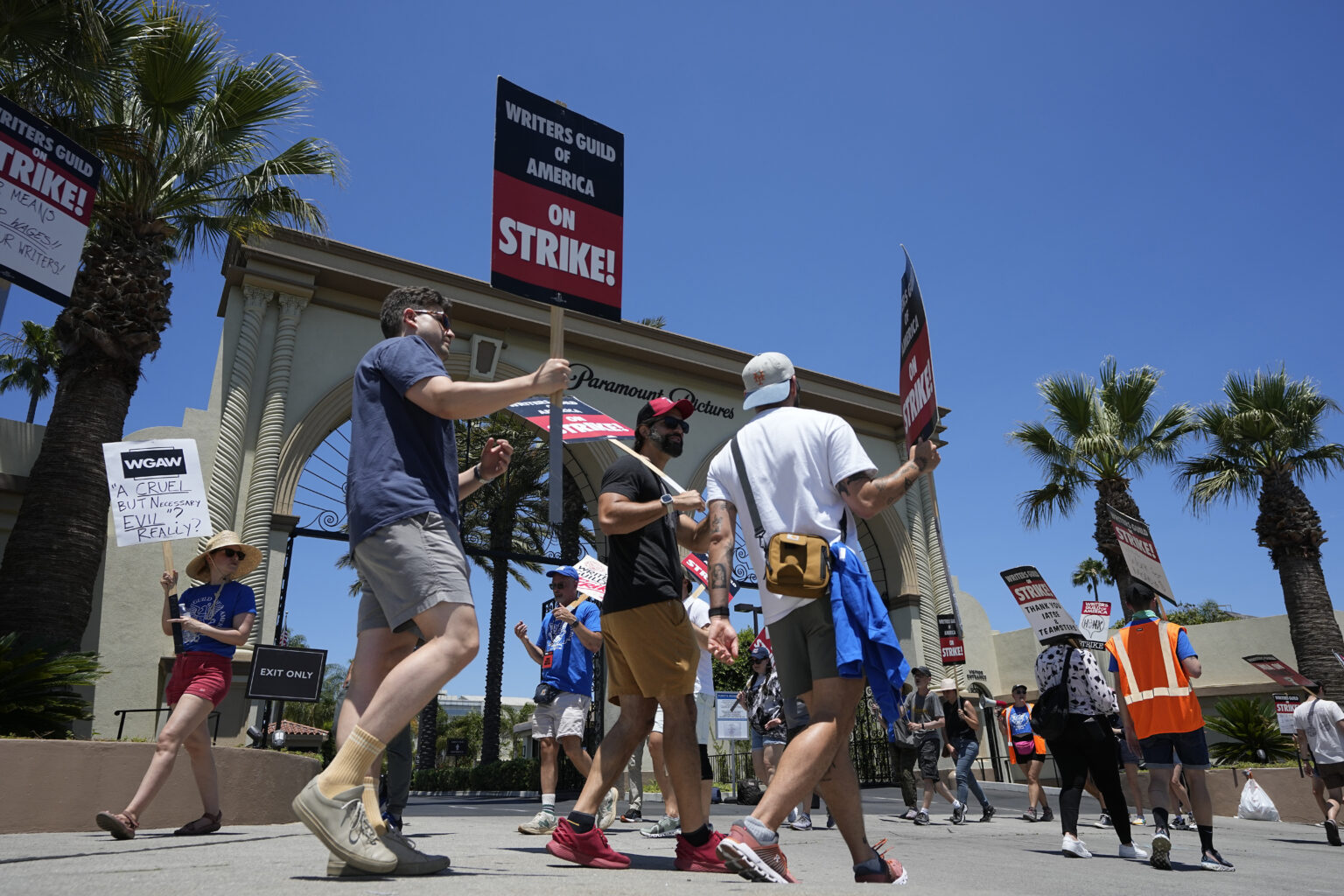
Is the Hollywood actors strike finally over? Here’s the new contract
The glitz and glamour of Hollywood have been dimmed by the harsh reality of strikes, leaving us all wondering: when will our favorite shows and movies get back on track? The latest development in this saga comes from SAG-AFTRA, the actors’ union, which has been striking for a whopping 114 days.
They’ve just received what the major entertainment studios are calling their “Last, Best and Final Offer.” But what does this mean for the future of entertainment?

A Glimmer of Hope
SAG-AFTRA’s negotiating committee, in a recent announcement to its members, revealed the receipt of this pivotal offer from the studios. The details of the offer are intriguing: a significant wage increase, potentially the highest in four decades, and a new formula for calculating residuals for streaming programs.
Additionally, the offer addresses the burgeoning issue of artificial intelligence in the industry, proposing consent and compensation requirements for its use.
The gravity of the situation was underscored by the presence of top executives from major studios in the hourlong video conference call with the union.
This included big names like NBCUniversal’s Donna Langley, Netflix’s Ted Sarandos, Disney’s Robert A. Iger, and Warner Bros. Discovery’s David Zaslav. Their involvement highlights the urgency to resolve the strike, especially considering the looming fall television season and next summer’s box office prospects.

The Wider Impact
While the actors’ strike has been a focal point, it’s crucial to remember that Hollywood has been in a state of near-paralysis for months due to strikes by both writers and actors.
The Writers Guild of America, representing over 11,000 screenwriters, recently ended their 146-day strike, reaching a tentative deal with the studios. Their demands, similar to those of the actors, centered around compensation for streaming content and the use of artificial intelligence.
However, the end of the writers’ strike doesn’t mean Hollywood is back to business as usual. With actors still on the picket lines, production remains largely halted.
This continued standstill affects not just the actors but over 100,000 behind-the-scenes workers, including directors, makeup artists, and lighting technicians. The economic impact is staggering, with California’s economy alone losing over $5 billion due to the shutdown.

The Struggle for Fair Compensation
At the heart of these strikes is a battle for fair compensation in an industry rapidly transformed by streaming services. The traditional metrics for residuals, based on box office performance and television ratings, are becoming obsolete in the streaming age. This shift has left many in the industry, from writers to actors, feeling shortchanged.
SAG-AFTRA’s demands have been notably ambitious, including a proposal for actors to receive 2% of the total revenue from streaming shows. This has been a sticking point, with studios deeming it a nonstarter. However, the recent deal with the Writers Guild, addressing similar concerns, could pave the way for a resolution with the actors.
A significant and somewhat futuristic aspect of these negotiations has been the role of artificial intelligence. Both the writers and actors have expressed concerns about AI being used to create digital replicas or alter performances without proper compensation or approval.
The tentative deal between the Writers Guild and the studios included specific language addressing these concerns, setting a precedent that could influence the actors’ negotiations.

A Turning Point
As Hollywood navigates these uncharted waters, the resolution of these strikes could mark a significant turning point. The industry is grappling with the realities of a digital, streaming-dominated era, and the outcomes of these negotiations will likely set new standards for how talent is compensated in this new landscape.
With the Writers Guild suspending picketing and encouraging its members to support the actors, the sense of solidarity in the industry is palpable. But the question remains: will this latest offer from the studios be enough to bring the actors back to work and end one of Hollywood’s most challenging periods? And more importantly, how will these negotiations shape the future of entertainment as we know it?



